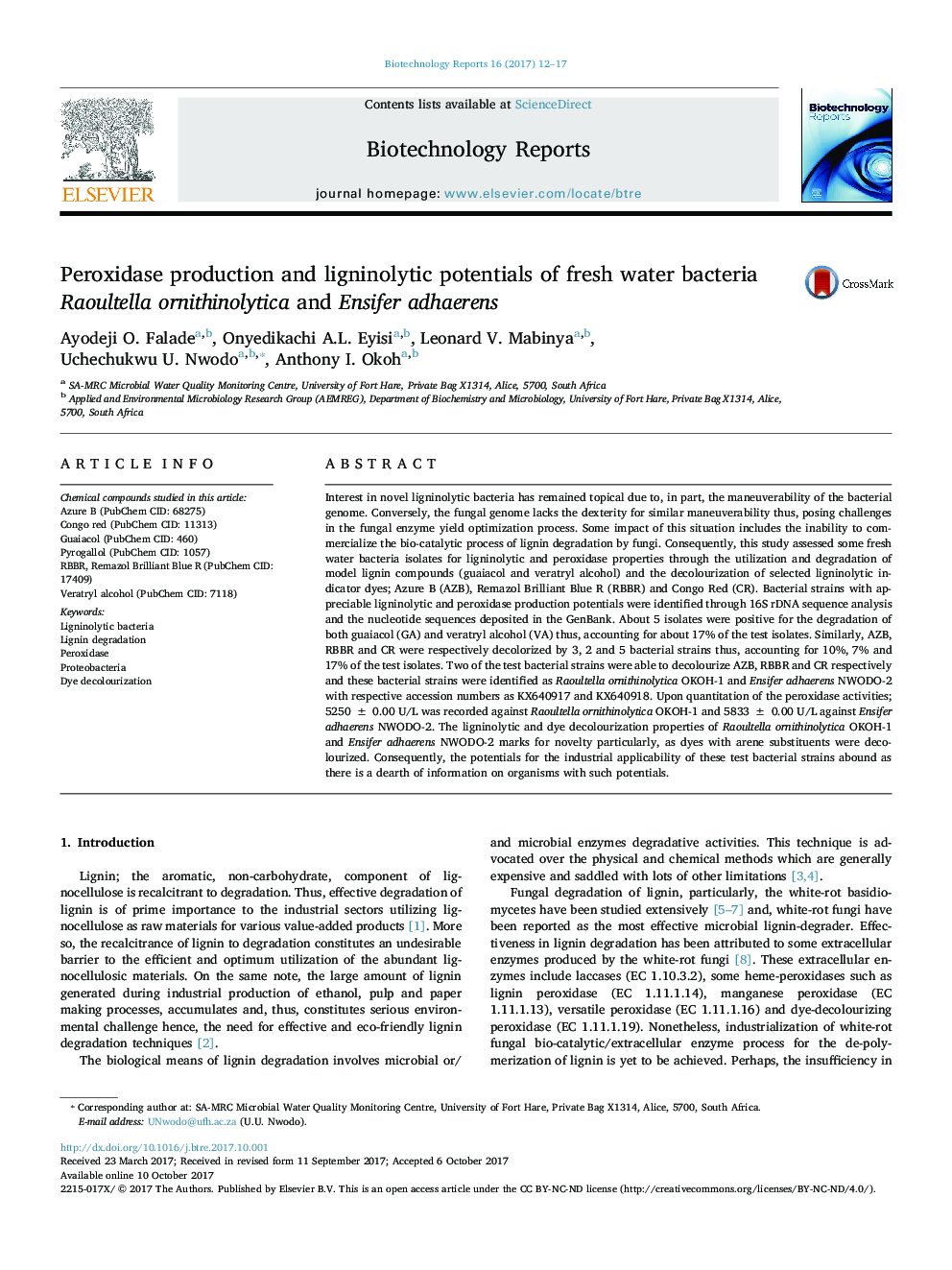| Article ID | Journal | Published Year | Pages | File Type |
|---|---|---|---|---|
| 5031746 | Biotechnology Reports | 2017 | 6 Pages |
â¢Isolation and identification of novel ligninolytic bacteria.â¢Ligninolytic bacteria showed potential for dye decolourization.â¢Peroxidase production potential of Raoultella ornithinolytica and Ensifer adhaerens.â¢Raoultella and Ensifer species possess great biotechnological potentials.
Interest in novel ligninolytic bacteria has remained topical due to, in part, the maneuverability of the bacterial genome. Conversely, the fungal genome lacks the dexterity for similar maneuverability thus, posing challenges in the fungal enzyme yield optimization process. Some impact of this situation includes the inability to commercialize the bio-catalytic process of lignin degradation by fungi. Consequently, this study assessed some fresh water bacteria isolates for ligninolytic and peroxidase properties through the utilization and degradation of model lignin compounds (guaiacol and veratryl alcohol) and the decolourization of selected ligninolytic indicator dyes; Azure B (AZB), Remazol Brilliant Blue R (RBBR) and Congo Red (CR). Bacterial strains with appreciable ligninolytic and peroxidase production potentials were identified through 16S rDNA sequence analysis and the nucleotide sequences deposited in the GenBank. About 5 isolates were positive for the degradation of both guaiacol (GA) and veratryl alcohol (VA) thus, accounting for about 17% of the test isolates. Similarly, AZB, RBBR and CR were respectively decolorized by 3, 2 and 5 bacterial strains thus, accounting for 10%, 7% and 17% of the test isolates. Two of the test bacterial strains were able to decolourize AZB, RBBR and CR respectively and these bacterial strains were identified as Raoultella ornithinolytica OKOH-1 and Ensifer adhaerens NWODO-2 with respective accession numbers as KX640917 and KX640918. Upon quantitation of the peroxidase activities; 5250 ± 0.00 U/L was recorded against Raoultella ornithinolytica OKOH-1 and 5833 ± 0.00 U/L against Ensifer adhaerens NWODO-2. The ligninolytic and dye decolourization properties of Raoultella ornithinolytica OKOH-1 and Ensifer adhaerens NWODO-2 marks for novelty particularly, as dyes with arene substituents were decolourized. Consequently, the potentials for the industrial applicability of these test bacterial strains abound as there is a dearth of information on organisms with such potentials.
Graphical abstractDownload high-res image (92KB)Download full-size image
